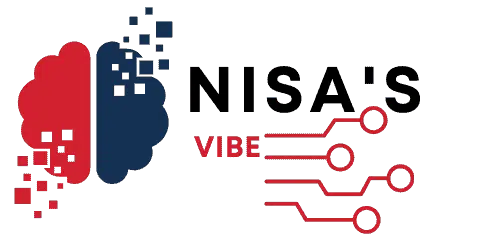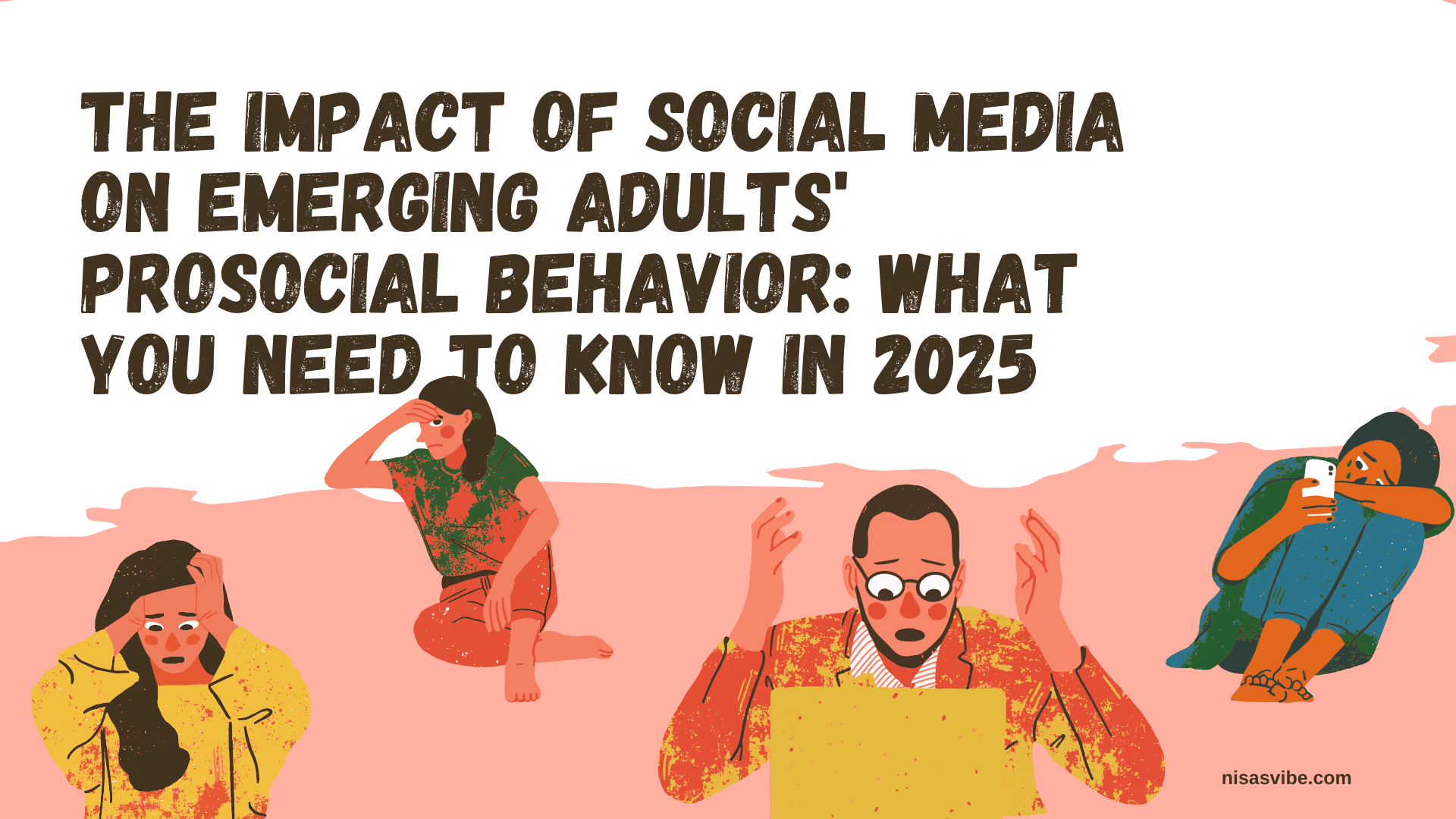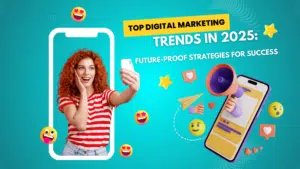Hi, I’m Nisa, a digital marketer and the owner of Perfect Prints of Love and nisasy.com. As someone who navigates both the digital world and e-commerce space, I’ve had the chance to observe how social media influences the behaviors of emerging adults—those between the ages of 18-29—in both positive and negative ways. Emerging adults, in particular, are heavily shaped by the world around them, and social media has become a central part of their everyday life, shaping their values, beliefs, and actions.
A question that continues to come up in both digital marketing and social psychology circles is how social media affects the prosocial behavior of young people. Prosocial behavior refers to actions that benefit others, such as helping, volunteering, and showing empathy. It’s vital because these behaviors form the foundation of community building and social cohesion, and for emerging adults, these actions are part of forming their identity and place in society.
So, how does social media, the driving force behind much of their daily interactions, influence these behaviors? Let’s dive in and explore the positive and negative effects.
Table of Contents
The Double-Edged Sword: Positive and Negative Impacts of Social Media
As we approach 2025, social media platforms like Instagram, Twitter, TikTok, and Facebook continue to evolve, and so does their impact on young adults’ prosocial behavior. In fact, social media is becoming increasingly ingrained in their social lives and identity-building process. Here’s a look at how it can influence empathy, community involvement, and helping behaviors.
Positive Impacts of Social Media on Prosocial Behavior
1. Online Activism and Raising Awareness
Social media has provided an unparalleled platform for raising awareness about social issues and encouraging young people to get involved. Whether it’s climate change, racial justice, or gender equality, social media has helped to create global movements that have inspired young adults to take real-world actions.
Platforms like Instagram and Twitter have become engagement hubs for various social justice movements. The ease of sharing posts, signing petitions, and spreading information has turned social media into a powerful tool for activism.
For example, movements like Black Lives Matter and the #MeToo movement have not only been widely discussed on these platforms but also have mobilized young people to attend protests, donate to causes, or advocate for change. In my own experience, I’ve seen how social media helped bring visibility to the #SupportSmallBusiness movement, which greatly benefited businesses like mine, Perfect Prints of Love. By utilizing social media, these movements help emerging adults develop a sense of social responsibility and community involvement, key aspects of prosocial behavior.
2. Building Empathy and Providing Emotional Support
One of the most positive aspects of social media is its ability to connect people who are facing similar challenges or emotional struggles. This creates a space for empathy—a key component of prosocial behavior. Whether it’s supporting someone through a mental health crisis or providing advice to a peer going through a difficult breakup, social media has allowed young adults to offer emotional support and develop stronger emotional intelligence.
Platforms like Reddit and Facebook Groups are filled with people offering helpful advice and support. In fact, emerging adults can find comfort knowing that someone on the other side of the world is going through the same thing. These interactions build empathy, understanding, and compassion. On a personal note, I’ve witnessed how Instagram has brought people together in meaningful ways to discuss everything from parenting to small business struggles, offering emotional and practical support to those in need.
3. Crowdfunding for Causes
Another prosocial avenue that has emerged thanks to social media is crowdfunding. Platforms like GoFundMe, Kickstarter, and Patreon make it easier for young people to support causes, fund creative projects, or help individuals facing medical bills or life crises.
The rise of crowdfunding has made it possible for emerging adults to directly contribute to social causes and initiatives. As someone who uses Etsy to sell my designs, I’ve seen how platforms like Instagram can amplify the reach of a crowdfunding campaign, enabling even small businesses or individuals to raise funds. By engaging with these campaigns, young adults are able to make a real-world impact with minimal financial commitment, fostering a sense of community and social contribution.
Negative Impacts of Social Media on Prosocial Behavior
While social media has many positive effects, there are also some drawbacks that can affect prosocial behavior among emerging adults.
1. Online Disinhibition and Toxic Behavior
Social media platforms can also enable negative behaviors like cyberbullying, harassment, and toxic conversations, all of which undermine prosocial behavior. In a sense, the anonymity that social media provides can result in individuals acting in ways that they might not in person. Studies have shown that the disinhibition effect—the tendency to say or do things online that one wouldn’t do in person—can lead to the degradation of empathy and the encouragement of antisocial behavior.
Emerging adults, in particular, are still learning how to navigate social relationships, and these negative interactions on social media can lead to increased aggression, stress, or mental health challenges. Over time, being exposed to toxic content can desensitize individuals to the importance of empathy and positive action, which is essential for prosocial behavior.
2. Social Comparison and Decreased Self-Worth
Another negative impact of social media is the increase in social comparison, where young adults compare their lives to the curated, often idealized, lives of others. Social comparison can lead to feelings of inadequacy, which can discourage people from engaging in prosocial behaviors.
For example, when emerging adults feel like they are falling behind socially, professionally, or financially, they may withdraw from engaging in charitable activities or even assisting others because they’re focused on their own insecurities. Additionally, the pressure to present a perfect life online may shift the focus away from genuine connection and prosocial behavior toward performative actions for validation.
3. Echo Chambers and Lack of Exposure to Diverse Perspectives
Social media can inadvertently create echo chambers, where individuals are exposed only to viewpoints that align with their existing beliefs. This can reduce the likelihood of young adults engaging with diverse groups and practicing prosocial behavior toward individuals who may hold different views. Lack of exposure to diverse opinions can breed intolerance and make it difficult for young people to understand different perspectives, ultimately impacting their willingness to engage in empathetic and cooperative actions.
Harnessing the Power of Social Media for Positive Change
Social media’s impact on emerging adults’ prosocial behavior is undeniable. It’s a powerful tool that can inspire positive actions, build empathy, and create opportunities for engagement in social causes. However, it’s also clear that social media can contribute to toxicity, social comparison, and isolation, which may discourage prosocial engagement.
As 2025 approaches, it is crucial for emerging adults to navigate social media in ways that maximize its positive potential while minimizing its negative effects. By fostering authentic connections, engaging in meaningful causes, and practicing self-awareness about online behaviors, social media can become a space for positive growth, both personally and within the broader community.
From my personal experience, social media has allowed me to connect with others, share knowledge, and promote causes that align with my values—while also fostering a sense of community in my own small business. By using these platforms consciously, we can create more empathetic, proactive, and supportive environments that encourage prosocial behavior in emerging adults and beyond.




